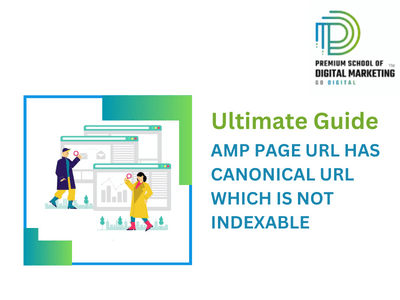
Table of Contents

By Rohit Shelwante
Updated on: Sep 20, 2023

A search engine also has to be able to take into account the device on which the query is made. Mobile devices are often slower than desktop computers and may not have enough storage space for all the data that a full web page would require. As a result, they need a different format of the same content in order to load quickly and fit on smaller screens.
AMP pages are web pages that provide both content and functionality similar to websites, but use technologies such as HTML, JavaScript and CSS in a different way. They display differently in search engine results pages – usually with an orange box outline around them – and are cached temporarily so they display faster on devices with slow internet connections.
Websites can also implement AMP features without publishing an AMP page by following Google’s “recommended best practices” for mobile optimization.
“With the rise of digital marketing, it’s important to have a solid understanding of how to best use it. Our Digital Marketing Institute will teach you everything you need to know about digital marketing. From Facebook ads to SEO, we’ll give you the knowledge and skills to be successful in this industry. Below are some of the cities where you can find classroom training.”
Digital Marketing Courses in Vashi
Digital Marketing Courses in Pune
Digital Marketing Courses in Ahmedabad
Digital Marketing Courses in Indore
Google’s new update on AMP pages is designed to make it easier for users to find the content they are looking for faster when using mobile devices.
Previously, people were able to find a variety of content on the internet quickly and easily by typing in a few keywords into their browser bar or searching the site directly. As more and more people started spending time browsing the internet on their mobile devices, they would often have to dig through multiple tabs, or sometimes even entire pages, just to find what they were looking for. With this update, AMP Pages will cut out all that wasted scrolling time by showing an abbreviated version of the webpage at the top of any search result that includes AMP Pages in it.
AMP and Slow Canonical URLs are two competing protocols for the web. AMP is a protocol that was created by Google to make pages load faster on mobile devices. Slow Canonical URLs is an open-source project that aims to reform current web design trends, like lazy loading images and redirects after page load, by making them work more like desktop browsers. But how do you know when you should worry about these protocols?
AMP and Slow Canonical URLs both have their own advantages and disadvantages. However, it really depends on the use case of a website if one of these protocols should be used or not. If your site’s content is highly interactive then AMP would be more ideal because it loads pages faster on mobile devices. But if your site’s content isn’t interactive then it may not matter as much which protocol one uses because both will work equally well and load content at a similar speed.
Google has just announced its latest algorithm update, named the Speed Update which will be launching in July of this year. We asked Google several questions about this update, including how this impacts desktop pages, whether pages with AMP URLs but slow canonical URLs will be impacted, if webmasters will get Search Console notifications and more.
Q1} Are you still going to be using the desktop speed factor for the desktop index?
Correct no changes to announce for the desktop.
Q2} With the mobile-first index, will desktop rankings use mobile page speed and not use desktop page speed?
No, this change is about the mobile search results. As mentioned in our mobile-first indexing blog post, while our index will be built from mobile documents, we’re going to continue to build a great search experience for all users, whether they come from mobile or desktop devices.
Q3} What about the sites that get the “unavailable” message in the Page Speed Insights report? How do they properly prepare for this?
Developers are encouraged to think broadly about how performance affects a user’s experience of their page and to consider a variety of user experience metrics. We encourage developers to use all the tools that make sense to them.
Page Speed Insights uses data from the Chrome User Experience Report. For sites that are not in the Chrome User Experience Report data set, we recommend using Lighthouse to evaluate the performance of a page.
Q4} Can you give us a percentage of queries impacted by this?
This will affect a small percentage of queries.
Q5} Will there be a significant drop in ranking if the site is impacted?
Speed is just one of many signals that are used to rank pages. Keep in mind that the intent of the search query is still a very strong signal, so a slow page may still rank highly if it has great, relevant content.
Q6} Will there be a notification of some sort in Google Search Console, or it is completely algorithmic?
This is completely algorithmic. There is no tool that directly indicates whether a page is affected by this new ranking factor.
Q7} Is it using the same data you use in the Page Speed Insights tool? The Chrome User Experience Data?
The intent of the signal is to improve the user experience on search. While we can’t comment on the types of data, we encourage developers to think broadly how about performance affects a user’s experience of their page and to consider a variety of user experience metrics when improving their site.
Here is an interesting article about: The Complete Guide to Meta Descriptions And How They’re Evolving With Google’s Updates
Q8} What if the site has AMP URLs but the canonical URLs are super slow? How does a site with AMP get impacted by this?
The same standard is applied to all pages, regardless of the technology used to build the page. The goal of this change is to improve the search user experience. In this example, since users from Search would be seeing an AMP page, the speed of the AMP page would be taken into account. However, if a page built with AMP provides a slow experience to users, it may also rank lower in the results.


